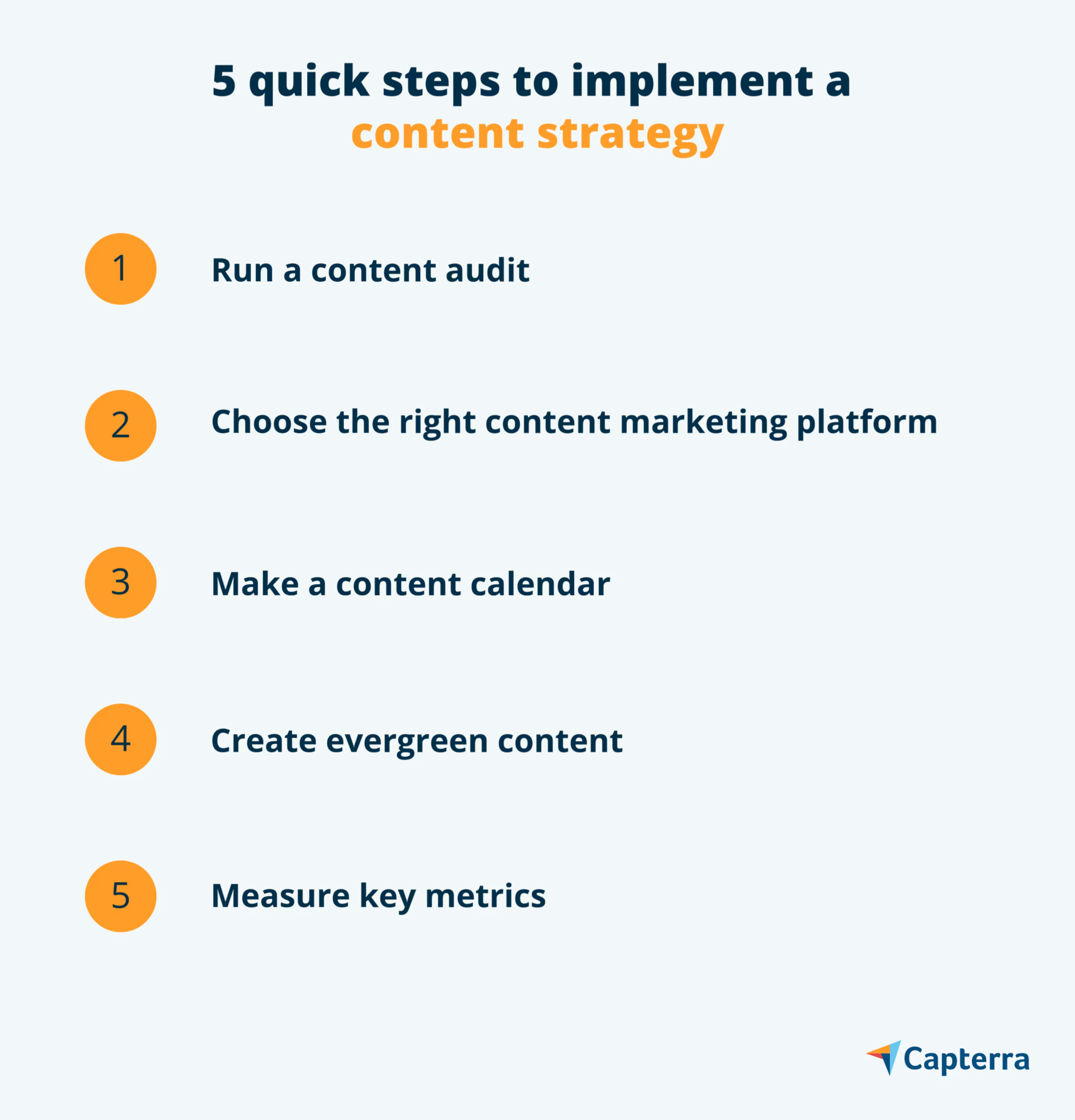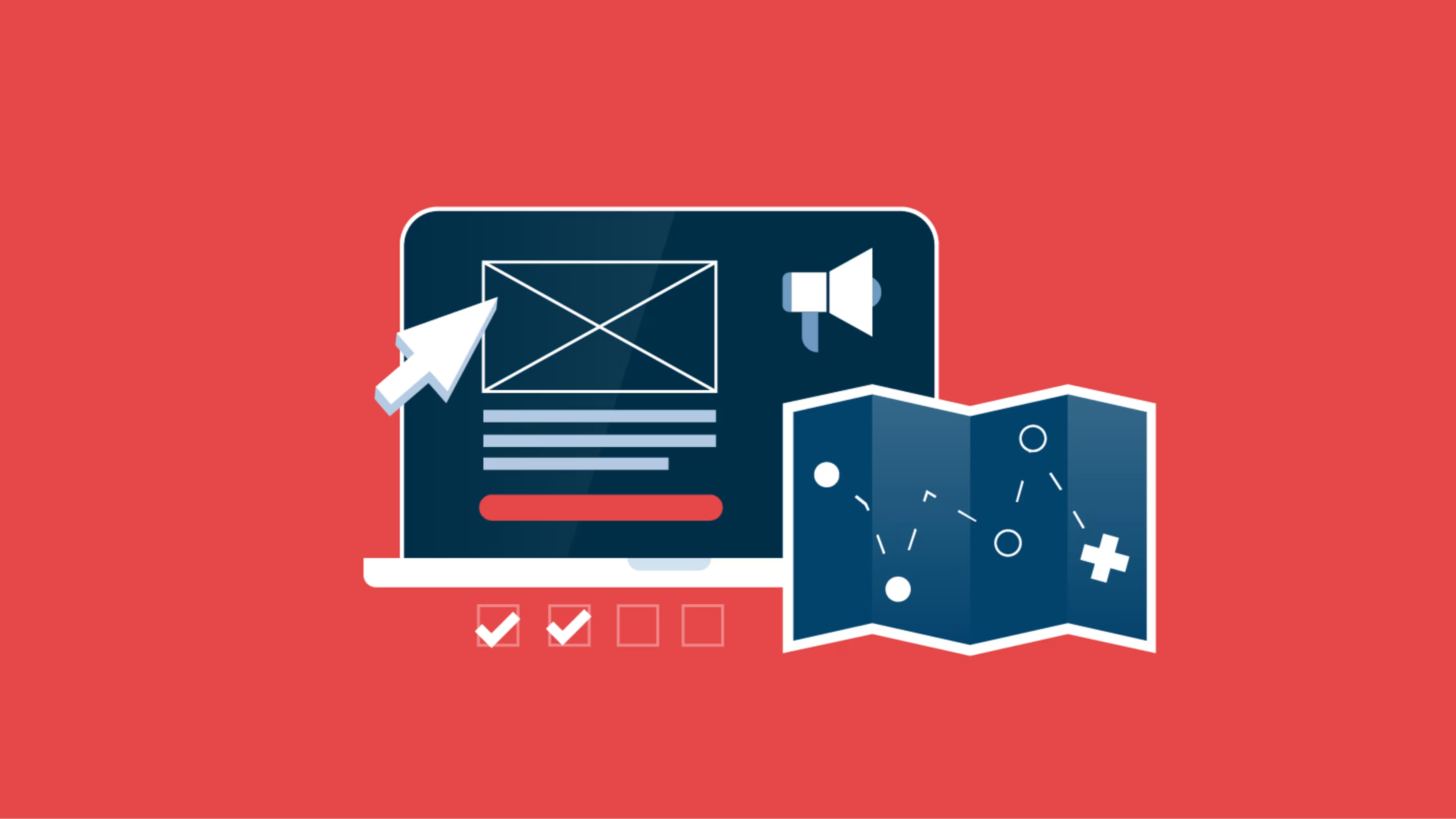Get up to speed quickly on the foundations of a content strategy.
Content strategy is the "long game" of marketing tactics. Rarely will a customer purchase your product or use your service after reading one piece of content.
However, the key is to build upon that strategy and be consistent. By doing so, your content will stick in your consumer's minds, and over time, will become your brand.
Here are five steps for building a successful content strategy and measuring key metrics of the performance of your content marketing.

1. Run a content audit
A content audit is an evaluation of your existing website to gain insight into your site's performance and decide how to move forward. Your content audit should help you recognize which content performs best and where you can fill in gaps in your content.
To start this process, collect the titles and URLs of the content you've chosen to audit and place them in a spreadsheet. In the same row as the title, include any other information that can help sort your content (like the content type or content category), then start entering the key metrics that define your content’s performance (more on that below!). You can also use an SEO tool to do this as some SEO software has built-in audit management features.
By organizing your content in this way, you can easily assess, side-by-side, how your content performed compared to other pieces.
Use your best-performing content as a guide for your content strategy and repurpose that content for marketing materials. Recognizing which types of content performed well can give you a picture of what your customers want and enjoy.
2. Choose the right content marketing platform
It's essential to choose the right content marketing platform that will give you insights into the performance of your content strategy to ensure you're distributing your content to the best channels.
In addition to helping you track how your content is performing across the sales cycle, a good content marketing platform can be instrumental in planning, creating, and publishing content across different channels.
Look for a tool that's easy to use. It should also be a system that seamlessly integrates with your existing tools and systems, such as your CRM, email marketing system, analytics platforms, etc. Take a look at what competitors are using and make sure you demo any tools you're considering before deciding on the best platform for your business.
With a content marketing system, your entire marketing team can stay aligned by planning and executing your strategy under a centralized database.
3. Make a content calendar
Start high-level with quarterly or monthly themes that are relevant to your industry. For instance, if you are in healthcare, look at which months focus on certain conditions (i.e. February is heart health month).
Plan your blog content, social posts, emails, and other content around these themes. Once you have this as a start, the rest can be plugged in as you go through the year.
4. Create evergreen content
Along with your themed content, you should create content that is not time-specific and can be reused for months and years to come.
This content can be:
FAQs about your business
How-to articles related to your products
Testimonials
Important resources
Use the data collected from your content audit to determine the best evergreen pieces to push out.
5. Measure key metrics
In order to determine if your content is moving the needle and reaching the right audiences, you need to measure the right metrics against KPIs (key performance indicators).
For example, by using source mediums[1], you can determine if your content is being reached organically, referred from other sites or social, or coming from other channels such as your email or paid media. By understanding where people are getting your content, you can choose to lean into those channels or optimize others to meet your audience and improve your metrics.
When it comes to determining exactly how your audience is engaging with your content, drill deeper with other metrics.
For example, web analytics software can measure metrics such as time on page, bounce rates, page sessions, new vs. returning visitors and social shares. Each of these metrics can be indicative of how engaged your audience is when viewing your content.
Focus on a few metrics to optimize to start and compare to your historical data for reporting. This gives you a sense if your content strategy is working and where improvements need to be made.
pro tip
The right marketing analytics software can be paramount in helping understand where your audience is receiving your content and can provide helpful insights that can best optimize your content in the future.
Learn more about developing your content strategy
Now that we’ve covered some of the fundamentals of a content strategy and some best practices on how to measure your efforts, refer to the following resources that can help you learn more about building engaging content:
Are you interested in becoming a guest writer for Capterra?
Reach out to guestcontributors@gartner.com for details.
